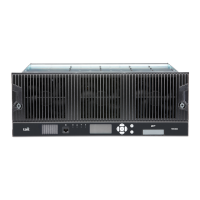TB9300 Installation and Operation Manual Description 29
© Tait International Limited April 2024
1.8.1 Signal Paths
Figure 1.7 gives an overview of signal paths within the reciter.
Digital DMR signals from the receive RF interface pass through the digital
receiver and DMR modem to the control firmware in the RISC processor.
The control firmware passes the signal through the Ethernet interface to the
node controller.
Input to the Ethernet interface is from the node controller. This input is
processed by the RISC and passed through the DMR modem to the
transmitter.
Analog FM signals from the receive RF interface pass through the digital
receiver and are converted to G.711 before being modulated and
retransmitted.
1.8.2 Online and Offline Modes
The base station normally operates in Online mode, but Offline mode can
be selected via its WebUI.
Online Mode In Online mode, the base station is in service and performs its normal
functions of transmitting and receiving radio signals.
Offline Mode Offline mode allows a maintenance engineer to carry out tasks that can not
be done while the base station is in service - such as activating firmware or
running diagnostic tests.
Figure 1.7 Reciter signal paths

